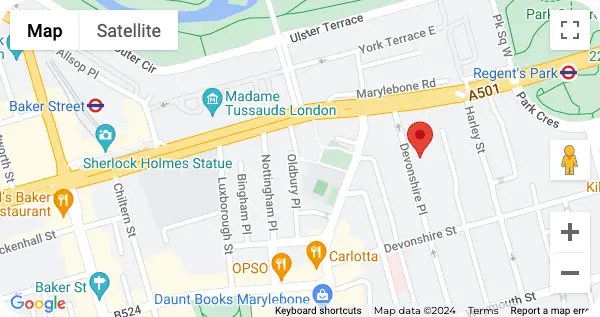Condition: Protuding Ears
Protuding Ears symptoms
& causes

Dermatological
Non-surgical
Surgical
Body Concerns
Health & Wellness
Skin & Face
Expert care for a wide range of skin conditions, ensuring healthy, radiant skin.
Lesions & Bumps
Comprehensive care for skin lesions and bumps, promoting clear and healthy skin.
Lifting & Tightening
Advanced treatments to lift and lighten the skin, enhancing firmness and brightness.
Rejuvenation
Revitalize your skin with advanced treatments designed to restore a youthful glow.
Skin Treatments
Effective solutions for a variety of skin concerns, promoting clear and healthy skin.
Wellness
Holistic skincare approaches to support overall skin health and well-being.
Advanced, non-invasive treatments to rejuvenate your appearance without surgery.
Body Treatments
Transformative, non-invasive treatments to sculpt and tone your body effortlessly.
Facial Treatments
Rejuvenating facial treatments to refresh and enhance your natural radiance.
Hair Treatments
Advanced treatments to restore hair vitality and promote healthy growth.
Injectables
Minimally invasive injectables to smooth wrinkles and enhance facial contours.
Precision cosmetic surgery tailored to enhance and refine your natural beauty.
Body Surgery
Expertly performed body surgeries to reshape, contour, and enhance your physique.
Breast Surgery
Specialized breast surgeries to enhance shape, size, and symmetry for a natural look.
Cosmetic Andrology
Advanced procedures designed to enhance male aesthetics and address intimate concerns.
Cosmetic Gynaecology
Tailored surgical solutions to enhance feminine aesthetics and improve intimate well-being.
Facial Surgery
Precision facial surgeries to refine features and achieve natural, balanced results.
Fat Transfer/Removal
Advanced fat transfer and removal techniques to sculpt and enhance your body’s contours.
Comprehensive solutions to address a range of body concerns, from stubborn fat to skin laxity.
Breasts
Tailored solutions for breast concerns, including size, shape, and symmetry.
Other Areas
Targeted solutions for stubborn areas of the body, tailored to your unique needs.
Volume & Contouring
Specialized treatments to enhance body volume and improve overall contour for a balanced silhouette.
Holistic care focused on improving overall health and well-being for a balanced lifestyle.
Digestive Health
Comprehensive care to support digestive health and improve overall well-being.
Energy & Immunity
Holistic approaches to boost energy levels and strengthen your immune system for optimal health.
General Health
Personalized strategies to maintain and enhance your overall health and vitality.
Expert care for a wide variety of skin and facial concerns, promoting a healthy, glowing complexion.
Ageing Signs
Expert treatments to minimize ageing signs, rejuvenating your skin for a youthful glow.
Skin Texture & Tone
Advanced treatments to improve skin texture and even out tone for a smoother, radiant complexion.
Specific Areas
Targeted treatments to address skin concerns in specific facial areas for balanced, refined results.
Volume & Contouring
Tailored solutions to restore facial volume and enhance natural contours for a more youthful appearance.

What are Protruding Ears?
Protruding ears are sometimes called “bat ears”, and some people may consider surgery to correct this . These are ears that stick out, more than is usual, from the side of the head. Some embrace this quality and some are self-conscious about it. It’s not due to injury or illness — this characteristic is typically hereditary and results from how the ear’s cartilage developed during fetal growth. While perfectly innocent, protruding ears can lead some people to feel disproportionate or attract attention they aren’t comfortable with. When the ear projects excessively it can be regarded as prominent. Around 2% of the population feel that their ears stick out too far. primitive ear development
What Causes Protruding Ears?
They come in every shape and size, but some naturally stand out more than others, often leading to good outcomes with corrective procedure .
Here’s why some people have them more than others:
What Do Protruding Ears Feel and Look Like?
Prominent ears are usually easy to identify, as they stick out from the sides of the head at a greater angle than is average. This can yield a more prominent or wider profile, particularly from the front or in photos. Some might find that one side protrudes further than the other resulting in slight asymmetry. The ears themselves are perfectly normal to the touch — the ears themselves don’t hurt or feel uncomfortable, and they work just like any ears do.
Protruding ears are typically defined by how far they protrude from the side of the head often greater than 2 cm. It is most apparent in pictures, side profiles or with hairstyles that expose the ears.
Often people with protruding ears notice asymmetry in the ears. One ear may stick out farther or line up at a slightly different place, which can seem more noticeable when styling hair, wearing glasses or looking at pictures.
Due to the placement of the ear, some accessories may not lay flat or snug. Glasses could tilt, headbands might pop off easily, and helmets can feel tight or unbalanced—all of which can be annoying in day-to-day use.
Although the condition is purely cosmetic, it can influence how an individual feels about their appearance. Genetically relatively common, persons with protruding ears notice them more in social environments, particularly targeted clothing, choosing not to wear their hair a certain way, or avoiding other fashion accessories.
There isn’t a medical problem to fix, but if the feature is affecting your mental wellbeing or is so bothersome to you in how you present, getting advice from a professional about how to determine the next steps can be useful.
Seeking Professional Help for Protruding Ears
Whether you’re hoping to enhance your look for aesthetic purposes or simply boost your confidence a bit, consulting a trusted specialist allows you to discuss what’s possible. If you are thinking about making any changes, the Harley Street Skin Clinic has a range of injectable expert options tailored specifically for just this.
It all comes down to genetics, for the most part. How your ears grew in the womb in particular, the cartilage determines their shape and angle. If the antihelical fold is overdeveloped or the conchal bowl is too deep, the ears will stick out more. It has nothing to do with the health of your ears, or your habits.
Protruding ears are usually caused by genetics and usually run in families. There’s a greater likelihood that a child would inherit prominent ears if one or both parents also have them. And in a few rare cases, what that ear does in early childhood how often it gets folded or pulled, it can also influence its final shape as the child grows. Most surgical treatment are for young patients and adult patients are successful but you should still consult with your surgeons about the treatment before you proceed.
From childhood teasing to adult self-consciousness, this might shape the way an individual styles or presents himself or herself socially.
Worrying about looks, especially in group settings, can impact confidence or trigger social anxiety.
Insecurity can also lead to avoidance of certain clothing, hats or hairstyles.
Others live for years with the condition and never correct the issue out of fear, cost, or simply not knowing that minimally invasive options exist.
In the womb, a baby’s ear cartilage is soft while a baby is developing. Regularly bending or applying pressure to the ears when sleeping can affect the way the ears develop. By treating the ears gently, it promotes natural growth.
Monitor infant sleep positioning
A baby who always lies on one side of the head may need its ear to turn into the same position. Switching sides and promoting tummy time limits uneven pressure and helps maintain balanced ear positioning.
Use soft, non-constrictive headwear
Hats and headbands that are pushing back too much can press the ears forward, particularly in younger children, who have softer cartilage. Looser or softer materials will help prevent unnatural placement during periods of development.
Avoid pulling or folding the ears
Chronic pulling or bending either by a child themselves or adults playfully doing so can place stress on the cartilage. This can, over time, assist with developing an angle that is more pronounced.
Address habits of ear rubbing in toddlers
Pointed or protruding ears in children are common, and while occasional touching or scratching is normal, repetitive rubbing or pushing against the ears may have an impact on their shape, particularly in children whose cartilage is softer. Other soothing behaviors that you could encourage are helpful as well.
Early consultation with a specialist
Seek advice early if you notice unusual ear positioning, as it can be influenced by factors during intrauterine life.
Some ear shapes can be gently corrected by non-surgical molding techniques if detected at birth. The earlier you consult a specialist, the more non-invasive treatment options you have.
Ensure children do not wear tightly fitting headphones
Headphones that hug the ears tightly, and for extended periods of time, can alter the angle of the ear. Opting for an adjustable style or one that doesn’t squeeze the ears prevents any long-term shaping effects.
Swaddling too tightly or with the ear folded in can cause permanent shaping. Resting the ears means keeping them free or ensuring the ears are not pressed against anything too harsh.






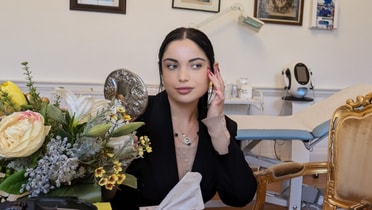
David Perkins
Saw Dr Omar who was great, friendly and professional.
Gillian And Bill McLeod
Wonderful consultation with Lesley!
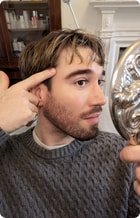
Yasmin Juma
Very good service
Frida Carlow
Great treatment! Very helpful receptionist!
Mariana O.
The best clinic !
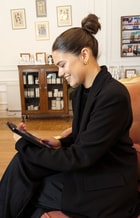
Prabs Rai
Painless and very reassuring

Robin Saxen
Very welcoming and informative.
Judith Durham
Very helpfull and amazing expirence
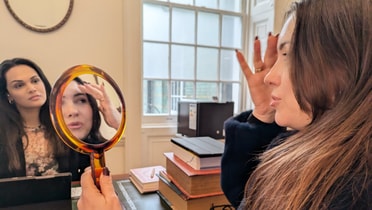
Ivelina Mileva
Fast, professional service with excellent quality!
Sarah Conners
Very professional and excellent care. Lovely premises.
59,645
Happy patients served.
Need to reach us?
Contact or visit our clinic.
We're based in central London at the historic 14 Devonshire Pl which is only a short 2 minute walk from Regents Park tube station a 10 minute taxi journey to Kings Cross, and St Pancras stations.
We're open Monday - Friday 8am - 8pm, and Saturdays 9am - 5pm, feel free to drop in to talk to a member of our team where they can answer any of your questions.
Alternatively book a free consultation, request a callback, or call us on 0207 4364441.
